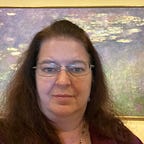Tailoring Your Resume — Clubhouse Recap from 7/15
This last week Amy, Tejal and I discussed the concept of “tailoring your resume”. This is a somewhat confusing topic, because every piece of advice suggests you “tailor your resume for every job”, and the biggest question we, as recruiters, receive is: “do you mean I need to rewrite my resume for every job I pursue/apply to?” The short answer is no — the longer answer is “sort of”.
If you have been in a relatively standard role(s), you don’t need to rewrite it every time. You *DO* want to make sure you pull the keywords from the specific JOB DESCRIPTION and make sure they appear at least once on your resume where applicable. (See my article on “How To Read A Job Description”). Amy has her “resume playlist” of videos, and I try and link specific articles as they relate to resume keywords. Usually when you are “tailoring” your resume, you will be mentioning specific types of experience, software programs, industry processes, or other career-related functional skills on your resume and you want to make sure to hit the keywords that are applicable to the specific job. For example, recruiters usually need at last one or two Applicant Tracking Systems. The job will usually mention their particular brand as a “nice to have”. If I have used it, I will make sure to put it in my summary AND in the actual job(s) I used it for.
What is super helpful at this point is to have a Master Resume. This is the ongoing resume that lists ALL your past (and present) experiences. Every time you complete a new project, learn and start using a new skill, or complete something educational, (ie software program, industry methodology, certification) add it to the master document. You will update this at any review cycle with goals for the next review period and at the end of that period, you will align the completion of those goals. Keep this master resume somewhere safe (in a cloud account, external hard drive, make sure you have a solid backup.) When you are ready to apply to a specific job, you can look at this master for projects and accomplishments that illustrate the skills that any specific job posting is asking for with solid examples from your own work history. Make sure you use metrics ($, %, #) as much as you can after you complete a project (how much money this project earned/saved the company, the % increase/decrease in time/money/resources, the number of whatever you were able to improve/decrease directly related to the project). By keeping a running tally of your work as you move along, “tailoring” your resume should be a matter of adding/subtracting bullet points/content as you move through your career.
The final point we covered has to do with having more than one actual career focus. For example, while — yes I am a recruiter — I also have a significant amount of paid work as a writer/content contributor. I have one resume that is geared more for writing/content generation. I also have multiple recruiting resumes: one for tech (which has specific sorts of roles and technology I have experience with), one for general recruiting, and one for consulting (which is much longer). If you have a side hustle, or perhaps you have been working across a couple of disciplines, or maybe you are mid-transition to a new discipline — it’s perfectly acceptable to have more than one resume, each one highlighting a specific skill set within the context of your professional history. This could include side hustles, volunteer/passion projects, as well as how your “day job” has helped you hone those skills or even develop an interest in a new area. The key is to make sure to blend it within the context of your existing experience and to show a progression of growth with your secondary skill set. For example, in my case I help write copy for LinkedIn and other social media platforms, I write/edit our job descriptions, I write/edit resumes and LinkedIn profiles on a freelance basis, and I have a large body of work (including paid projects) related to the staffing/recruiting industry (including job seekers.) I had a column on the Seattle Times for ~2 years, and I have a substantial portfolio of both edited and unedited (original) writing. My content-focused resume concentrates on the activities and metrics associated with these activities instead of actual recruiting information.
The only caveat is that MOST employers will only accept ONE resume at a time for applying to active, open roles. You need to make sure you are applying with the applicable resume for the type of job you are pursuing at a given employer. (For example if you are applying at Google for a Product Manager position, you cannot also be applying for Content Editor position with a different resume –you can usually only have one active resume file at a time. If you upload a different resume, it will affect all your open applications by showing the new resume.)
Hopefully this helps alleviate some of the confusion about tailoring a resume and having multiple versions of your resume.
